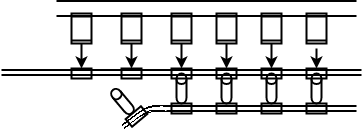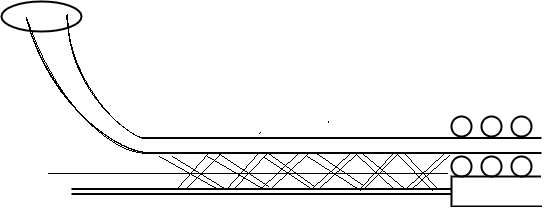This set of Engineering Materials & Metallurgy Multiple Choice Questions & Answers (MCQs) focuses on “Glass Production and Processing”.
1. Which of the following is not a process involved in glass production?
a) Extrusion
b) Forming and shaping
c) Heat treatment
d) Finishing
View Answer
Explanation: Glass is produced by high-temperature operation of raw materials in a furnace. These processes include melting and refining forming and shaping, heat treatment, and finishing.
2. At what temperature are raw materials inserted into the furnace?
a) 1000oC
b) 1500oC
c) 2000oC
d) 3000oC
View Answer
Explanation: A mixture of raw materials such as SiO2, Na2CO3, dolomite, and several other are inserted into a furnace at 1400-1500oC for melting. This results in molten glass, which must be drawn off the furnace at 1000oC.
3. Which forming method is used for the production of hollow glasses?
a) Blowing
b) Pressing
c) Drawing
d) Casting
View Answer
Explanation: Glass blowing is a forming technique used to produce hollow objects like bottles and jars. In these machines, molten glass in ribbon form blows holes while air is supplied from above.
4. Which method of forming cannot be used to produce sheet glass?
a) Floating
b) Rolling
c) Drawing
d) Casting
View Answer
Explanation: In drawing operation, the glass is derived from a molten mixture and is passed through the rollers, where it is passed between cooled rolls. In floating operation, the molten glass is formed into a sheet. Any of these three operations may be performed to manufacture sheet glass.
5. Which operation does the below figure represent?

a) Drawing
b) Pressing
c) Blowing
d) Rolling
View Answer
Explanation: Machine blowing is forming operation carried out to manufacture hollow products. In this machine, the molten glass in ribbon form blows holes while air is supplied from above.
6. Which forming operation does the below figure represent?

a) Drawing
b) Pressing
c) Floating
d) Rolling
View Answer
Explanation: In the drawing process, glass is formed into tubing and rods. Molten glass is supplied to a bushing containing orifices. Through this, continuous glass fibers and filaments are formed.
7. The temperature at which a non-crystalline material transforms from a supercooled liquid to rigid glass is __________
a) Melting point
b) Glass transition temperature
c) Boiling point
d) Crystalline temperature
View Answer
Explanation: Glass transition temperature is defined as that temperature at which a change from supercooled liquid state to stiff glass occurs. Below this temperature, the glass structure remains frozen while retaining characteristics of the liquid structure. This temperature is denoted as Tg.
8. Glasses show evidence of _____ fractures.
a) No
b) Brittle
c) Ductile
d) Oblique
View Answer
Explanation: Generally, materials experience either ductile or brittle type of fractures. Glasses experience a brittle fracture. In such types of fracture, the glass shows no signs of a fracture occurring until it occurs i.e. no indication or deformation.
Sanfoundry Global Education & Learning Series – Engineering Materials & Metallurgy.
To practice all areas of Engineering Materials & Metallurgy, here is complete set of 1000+ Multiple Choice Questions and Answers.
If you find a mistake in question / option / answer, kindly take a screenshot and email to [email protected]
- Check Engineering Materials Books
- Apply for Metallurgical Engineering Internship
- Practice Metallurgical Engineering MCQs
- Check Metallurgical Engineering Books
